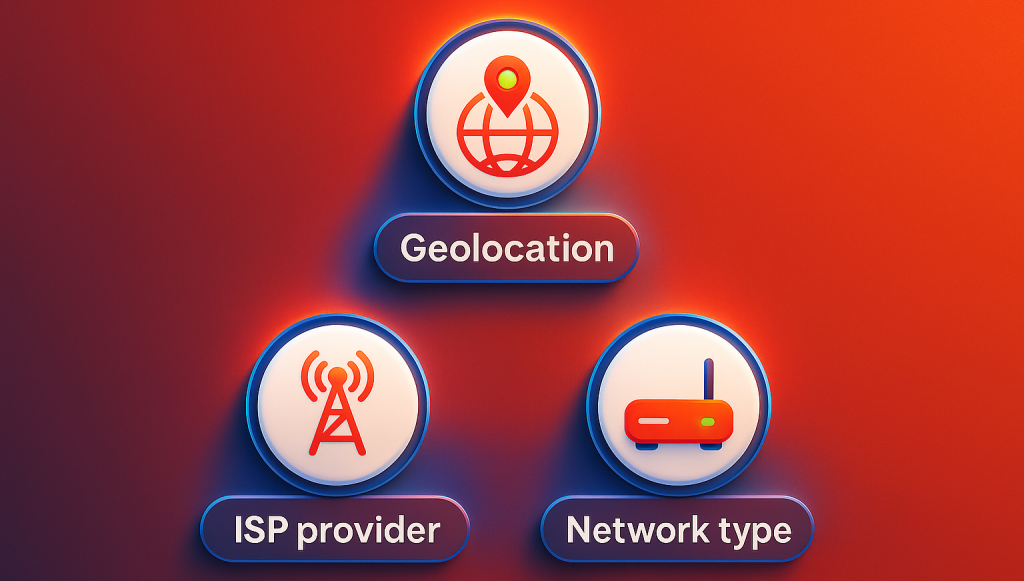Global Residential & ISP Proxies | Torch Labs
It sounds like something out of a spy movie, tracing an IP address to someone’s exact phone number. Intrigued netizens and amateur sleuths are often curious: Is there any way to find a mobile phone number using just an IP address? Whether driven by anxiety about doxing, security concerns, or pure tech fascination, this is a surprisingly common question. In this guide, we lay out the myths vs facts and what you can really find.
IP addresses function like digital return addresses, marking the general origin point from which a person is connecting to the internet. Every device connected online has one. But what type of information can an IP address practically reveal?

However, it’s important to note –
An IP address does not contain personal identifiers like your name, phone number, or email on its own.
Unless proactively disclosed alongside sign-in or authentication data, the scope of what’s visible to the public is very low. IP address results from a geolocation lookup service, for example, are often broad and dependent on whether the device operates via residential, corporate, or VPN-based internet pathways.
Fun fact: If users are behind a proxy or VPN, even geolocation and precise origination will often be masked entirely.
Let’s bust the central myth: you cannot find someone’s mobile phone number using just an IP address.
This misconception likely stems from how we think access works online or how it’s portrayed in crime shows. But technically and legally, here’s why this simply isn’t feasible:
Even advanced privacy agencies need signed warrants and jurisdictional powers to begin correlating identities behind said data points. So for anyone unlicensed: you can’t map unknown numbers from random IPs.
In law enforcement settings, yes: IP tracebacks can serve as auxiliary tools, potentially aiding in investigations. But this works through layered cooperation chiefly with ISPs.
Here’s how police investigations usually leverage this method:
But these escalations are regulated by regional bodies and privacy laws worldwide. For example, under the GDPR in Europe or CCPA in California, personal information disclosure cannot casually occur.
So unless you’re law enforcement with proper authorization, tracking a phone number from an IP remains firmly impossible and doing so illegitimately, is likely illegal.
If you’re curious about masking your own IP or wondering how sites appear to route traffic from faraway regions, that’s where proxy servers come in. Essentially, they act as intermediaries hiding your actual IP details.
This is particularly valuable in use cases like price validation across regions, ad fraud protection, or simply avoiding targeted tracking while browsing freely.
Explore privacy-safe proxies with security-centric features at Torchlabs residential proxies.
Whether you conduct macro-level research or care about boosting your surveillance resistance, using residential or mobile proxies delivers clear upshots:
Among proxies, options such as residential proxy delivers custom pool targeting, whereas ISP proxy options combine home-routed authenticity with higher speed throughput.
In hacker lore and open-source intelligence (OSINT) digging, people refer to patched-together tracing methods like bounce verification, tracerouting, and call-back payloads toward unauthorized recon.
But these are technically unsound and often legally risky.
Curious what’s categorized as legitimate snooping vs digital intrusion?
Tools or goal sets that are too forensic in their targeting blur the line. So keep red teaming clean and avoid janky IP decode references expecting sensitive user data like phone numbers.
With awareness around privacy increasing globally, legislations now affirm personal data safeguarding even at borderline metadata scopes. Two key pieces of legislation define frameworks better:
That’s why many major tracking trees (especially advertising) tie in native consent tools those “allow cookies” banners focused largely on IP origination contexts. Without informed consent, logging-level retention or expansion of identity mapping becomes violation material.
For data traceability teams and ethical developers: even tools >10% adjacent to IP browsing habits require reminiscence of storage management protocols.
With the flood of data that travels across networks every second, your digital privacy isn’t ever naturally secured, it’s something to act upon.
First off: worry less about mystery hackers tying your IP to your phone. That simply doesn’t happen. But do think about the sites you trust and which companies enrich ads baked around your click trail.
Start protecting yourself by employing anonymous browsing VPNs, intelligent ad blockers… and where higher asymmetry is needed, working protections like a rotating residential proxy.
Your data is your identity. Less exposed connection = more sovereignty and control.
FAQ
Q:Does IP address reveal phone number?
A:No. An IP address can show rough location (city/ZIP) and the internet provider, but it does not reveal a phone number. Only a carrier/ISP could associate an IP with a subscriber and that typically requires legal process.
Q:Can a cell phone IP address be traced?
A:Yes, the IP in use can be looked up for approximate geolocation and ISP details. However, it usually identifies the network (Wi-Fi/public IP or carrier’s NAT) rather than the individual user, and VPNs/proxies can mask it; tying it to a person generally requires provider cooperation and lawful requests.
Q:How to find mobile IP number?
A:On Android: Settings → Network & Internet (or Connections) → Wi-Fi → (gear/info for your network) → IP address. On iPhone: Settings → Wi-Fi → (ⓘ next to your network) → IP Address. To see your public IP on any device, search “what is my IP” in a browser.
Q:Can an IP address reveal identity?
A:Not directly. An IP alone exposes only general location and ISP not your name, email, or phone. Identity linkage usually happens only when combined with other data or via the ISP under lawful request; using VPN/Tor can reduce traceability.